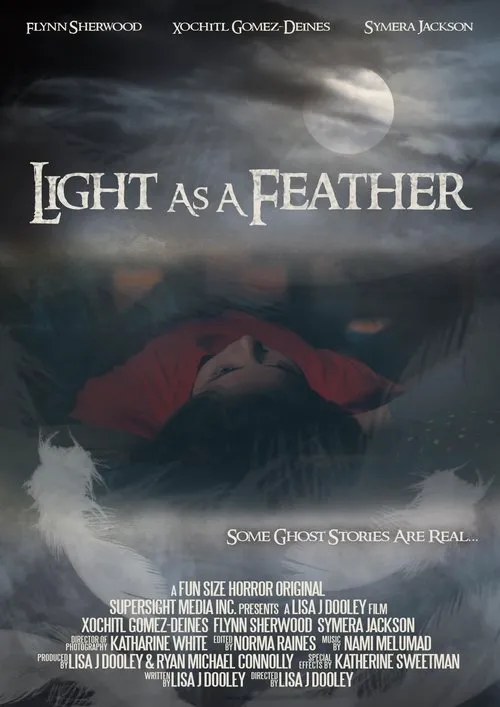Light As A Feather

あらすじ
In the haunting short horror film "Light as a Feather," directed by Lisa J. Dooley, the audience is transported to a dimly lit room where the lines between reality and psychological manipulation become eerily blurred. The narrative revolves around a protagonist, whose name is never explicitly stated, as she undergoes a series of surreal and terrifying events. The film opens on a shot of the protagonist lying in bed, dressed in what appears to be a simple nightgown or hospital gown. As she begins to speak, it becomes apparent that she is recounting a story, though it remains unclear whether this is a memory or a current event. Her narrative starts at a sleepover with friends, where they engage in a ritual, often associated with teenage behavior. The ritual, though seemingly insignificant and even playful among the group of friends, takes on a darker turn as the narrative progresses. The group of friends performs a seemingly lighthearted, even playful, act of standing in a circle, holding hands, and jumping up into the air in a specific pattern. Each member of the group must, however, be lifted by their friends before jumping to avoid touching the ground. As they jump higher and more recklessly, the act becomes a test of trust, loyalty, and the limits of physical strength. This innocuous act is portrayed as a precursor to supernatural occurrences and psychological manipulation. One of the participants starts to question the nature of this activity and the consequences of playing with forces beyond their comprehension. This is where the narrative takes an unsettling turn, raising questions about the reliability of the storyteller and the blurred lines between reality and fantasy. Throughout the film, Director Lisa J. Dooley masterfully captures an atmosphere of creeping unease. Dooley's choice of cinematography and editing technique creates disorienting jump cuts, disquieting low-angle shots, and an unsettling color palette, heightening the tension and emphasizing the sense of uncertainty. As the protagonist speaks about the events following the ritual, her story takes an ominous turn. She recounts how a sinister presence gradually emerges, infiltrating not only her waking life but also her subconscious. The lines between reality and fantasy become increasingly blurred as the protagonist's grip on her own sanity starts to slip. Her narrative oscillates between moments of seemingly normal teenage behavior and episodes of utter terror. Dooley uses non-linear storytelling to weave together fragments of the protagonist's narrative, which, as the film progresses, becomes a desperate attempt to cling onto her own reality in the face of a malevolent force that seems to be manipulating her every action. The use of a found-footage-style narrative adds to the sense of immediacy, making it even more difficult to distinguish what is real and what is part of the protagonist's deluded state. Dooley's approach not only creates a sense of disorientation but also makes the viewer a part of the protagonist's world, drawing them into the nightmarish atmosphere of the film. As the narrative hurtles toward its climax, the protagonist's sanity continues to fray. Her account of the events becomes increasingly incoherent, raising questions about the reliability of her narrative. It is unclear what is more unsettling – the supernatural forces that seem to be invading her world or the uncertainty that surrounds the reality of these events. Ultimately, "Light as a Feather" presents a haunting vision of psychological manipulation and the devastating consequences of tampering with forces we barely understand. The film raises thought-provoking questions about the nature of reality, the fragility of the human psyche, and the potential horrors that lurk just beyond our perception.
レビュー
おすすめ


